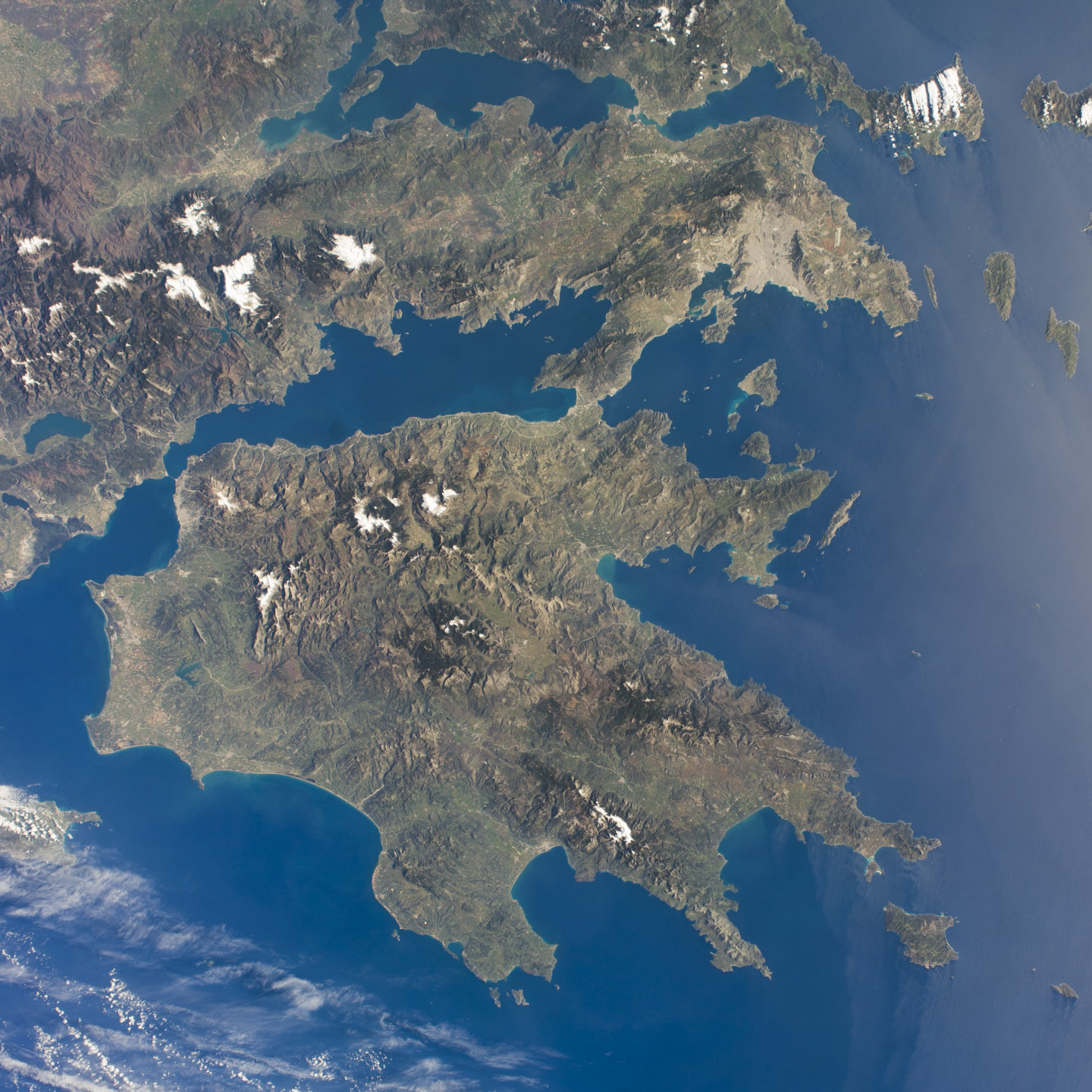Beauty of Greece Dazzles from Space (Photo)

Greece's rugged shoreline stands out against the brilliant blue Mediterranean Sea in a new astronaut photograph.
Taken from the International Space Station, this photograph snapped on March 21 shows a cloud-free view of most of Greece. The large peninsula at the center of the image is the Peloponnese, home to the famous city of Sparta. The Peloponnese is connected to the Greek mainland by the Isthmus of Corinth. The city of Corinth, rebuilt in 1858 after an earthquake destroyed the ancient city, is visible as a small, gray developed area on the western coast of the isthmus, where it connects to the Peloponnese.
On the east side of the isthmus, farther north, is Megara. This city sits across from the island of Salamis, and, historically, was an important port for trade around the Mediterranean.
Finally, and most obviously, the sprawling metropolis of Athens sits north of the isthmus. Visible as a broad gray swatch, the Athens urban area is home to more than 3 million people. The city itself is one of the oldest on Earth, with more than 3,000 years of recorded history. Archaeological evidence suggests that humans have made a home in the area for at least 7,000 years.
Many of the monuments of Ancient Greece survive in modern Athens, most notably the Acropolis, a high hill full of ancient buildings and fortifications. The oldest large structures of the Acropolis date back at least 3,200 years, but the most impressive building occurred during the fifth century B.C., during Athens' "golden age." It was during this time that the Parthenon, the city's famous temple built to worship the goddess Athena, was constructed, along with another temple, the Erechtheion, and a new entrance building, the Propylaea.
Toward the right of this image, the sun's glint tempers the blue of the Mediterranean, and the wind causes a streaky effect, according to NASA's Earth Observatory. Other visible natural features include snow-capped peaks and verdant valleys.
Editor's Note: If you have an amazing nature or general science photo you'd like to share for a possible story or image gallery, please contact managing editor Jeanna Bryner at LSphotos@livescience.com.
Get the world’s most fascinating discoveries delivered straight to your inbox.
Follow Stephanie Pappas on Twitter and Google+. Follow us @livescience, Facebook & Google+. Original article on Live Science.

Stephanie Pappas is a contributing writer for Live Science, covering topics ranging from geoscience to archaeology to the human brain and behavior. She was previously a senior writer for Live Science but is now a freelancer based in Denver, Colorado, and regularly contributes to Scientific American and The Monitor, the monthly magazine of the American Psychological Association. Stephanie received a bachelor's degree in psychology from the University of South Carolina and a graduate certificate in science communication from the University of California, Santa Cruz.


